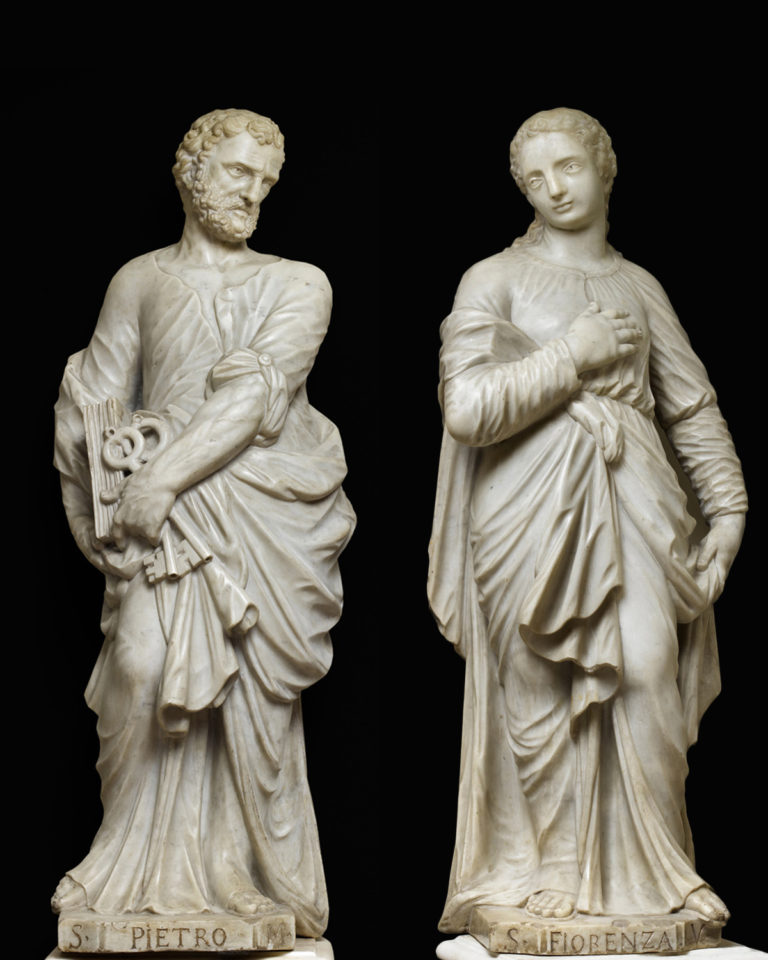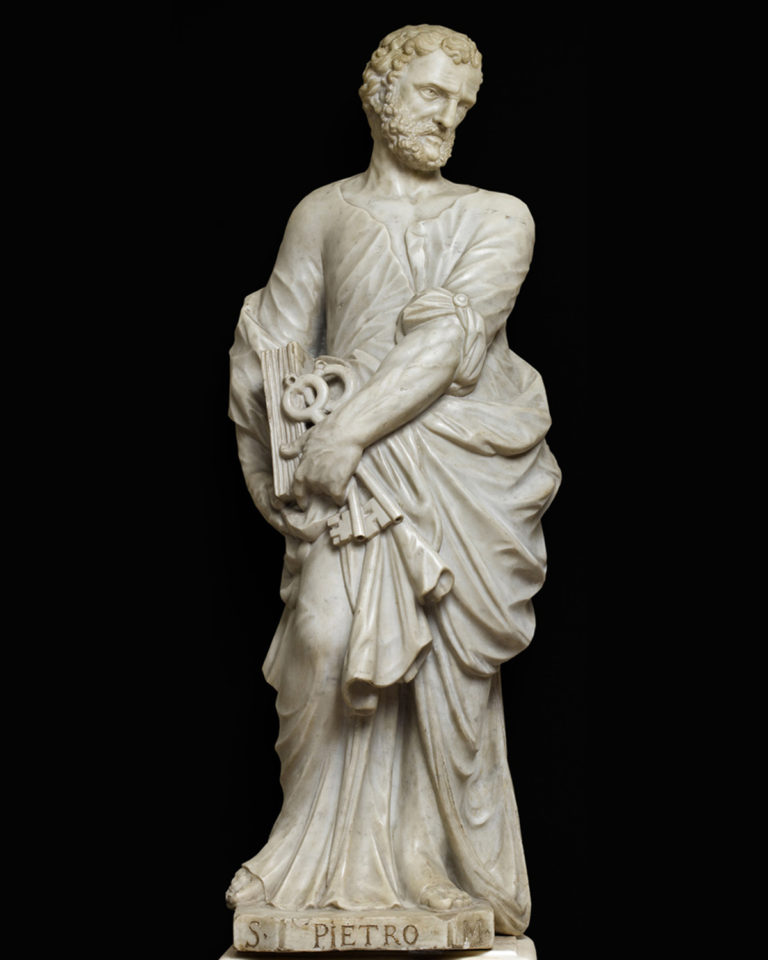Statues of Saint Peter and Saint Florence in white marble. On the bases are inscribed "S. Pietro M." and "S. Florenza V."
Dimension: H: 40,15 in
18th century period.
Attributed to Giovanni Maria MORLAITER (Venise, 15/02/1699 – 22/02/1781), Venetian school.
Saint Peter is very easily recognizable by his attributes, a book and two keys, one in gold, celestial and the other in silver, earthly, which allows him to open and close the doors of Paradise.
Sainte Florence est plus énigmatique. Elle est représentée sous les traits d’une jeune fille aux cheveux dénoués, portant la main sur le coeur. Trois saintes sont connues sous ce vocable: Sainte Florence d’Agde, Sainte Florence de Carthagène, et Sainte Florence de Comblé.
Chaque statue est un monolithe de marbre blanc, conçu pour être vu en contre-plongée. L’artiste a accentué les membres supérieurs, et soigné les « dessous » des drapés aux plis étudiés. Sainte Florence, douce et apaisée, retient sa toge d’une main dans un léger contrapposto, esquissant un pas, l’autre main sur le cœur.
Saint Pierre donne par opposition une impression de fermeté, renforcée par un regard plus sévère. Les deux saints sont vêtus à l’antique, de simples broches ou fibules retenant les étoffes.
If the pose, very static, with slightly inclined heads, resumes medieval cannons, the elegant and mannerist treatment of the fabrics with folds softened, without frank breaks, and the treatment of the hands of St Peter, all these elements allow us to attribute these works to Giovanni Maria Morlaiter, considered one of the greatest Venetian sculptors of the 18th century.
La richesse du matériau, marbre blanc fort onéreux, peut laisser présumer que ces sculptures étaient destinées à la chapelle peut-être privée d’un important commanditaire.
Giovanni Maria Morlaiter :
He was a founding member of the Accademia of arts in Venice.
Almost all the sculpture in the church of the Gesuati, Venice is the work of Morlaiter, a real masterpiece. A few historians in Art describe him as one the best sculptors. Hugh Honour describes him as "one of the ablest sculptors in eighteenth century in Venice"[1] and Semenzato as "the most brilliant interpreter of the rococo in Venetian sculpture". There is more of his work in the church than anywhere else in Venice.[2]
His first work for the church was the Glory of Angels (1738) on the second altar on the right, and after this Massari engaged him for all the other principal works of sculpture, ending with the statue of Melchisedek (1755). Clockwise from the entrance, the statues in six niches and coupled bas reliefs above are: Abraham (1754) and Jesus and the Centurion (1754); Aaron (1750) and Jesus heals the blind (1750); Glory of Angels (1739); St Paul (1745) and Jesus appears to Magdalen (1743); Christ appears to doubting Thomas (1747; no niche); Baptism of Jesus (1746); St Peter (1744); Christ and Samaritan at Well (1744); Moses (1748–50) and Healing of Paralytic (1748–50); Melchisedech (1755) and St Peter walks on water (1755).
Other works from him which can be seen in two other churches in Venice :
- Gerolamo Emiliani, church Santa Maria della Salute, Venice
- Madonna del Rosario, church San Geremia, Venice


